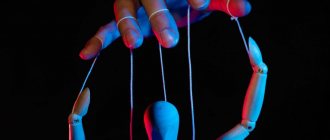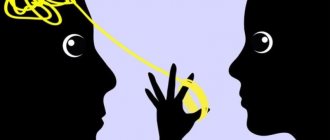Medical information is reliable Checked by Eremin Alexey Valentinovich
An irresistible craving for psychoactive substances is called dependence syndrome. The diagnosis is made based on a variety of established signs and symptoms. This is not a death sentence; visiting Dr. Isaev’s Clinic will allow you to undergo timely rehabilitation and return to normal life. For each patient, this process takes a different amount of time, it all depends on the length of time you have been taking the substances and the individual characteristics of the body.
In the International Classification of Diseases 10, addiction syndrome is officially called drug addiction. The condition is expressed in persistent addiction to psychoactive substances. A person dependent on them loses the meaning of life. All his thoughts begin to revolve around the next dose. All thoughts are built around the question of how to get a “high” and bring yourself into a state of unbridled euphoria.
Dependency syndrome: the essence of the concept
For the patient, this condition can result in disastrous consequences. He first partially and then completely loses the ability to control himself and his actions, his emotional background and the criticality of his thinking. In ICD-10, addiction syndrome is defined as a complex of behavioral, physiological and cognitive phenomena in which the use of narcotic and other types of psychoactive substances occupies a central place in a person’s value system.
Relatives, friends, work colleagues, interests and activities that were previously important to the patient fade into the background. After some time, they almost completely disappear from his life. The main characteristic of the syndrome is a strong, sometimes irresistible desire to consume alcohol, drugs and other substances that alter consciousness.
Doctors focus on the fact that people with addiction syndrome, even after a long period of abstinence, return to using psychoactive drugs, and their symptoms become more pronounced. People who do not have this diagnosis can take these substances without such a pronounced clinical picture, provided that the use is episodic and there is no overwhelming desire to achieve euphoria with the help of drugs or alcohol.
Avoidance addiction
A person suffering from avoidance addiction cannot build close, sincere, trusting, long-lasting relationships; he subconsciously avoids them. At the same time, the person to whom the addict’s love is directed is valuable and important to him. Thus, a duality of the situation arises - the addict either attracts the object of love to himself, or pushes him away from himself. Both partners suffer from this.
Signs of avoidance addiction:
- Avoidance of intensity in relationships with a significant person (love addict). The avoidant addict tries to spend more time away from the love addict's company. Relationships with an avoidant addict can be considered “sluggish”, since they are important for the addict, but he avoids them and does not allow him to build close relationships.
- The desire to avoid sexual contact through psychological distancing. Having a fear of intimacy, the avoidant addict is afraid that if he enters into a close relationship, he will lose his freedom and will be under control. On a subconscious level, the avoidant addict has a fear of abandonment, which leads the addict to the desire to restore and maintain relationships, but keep them at a distant level.
Types of addiction
Treatment of addiction syndrome at Dr. Isaev’s clinic involves an integrated approach. Within its framework, the specialist works with the patient himself and his close circle to avoid the risk of relapse. This term means an obsessive attraction that pushes the patient to a certain type of activity. With the help of drugs, the addict achieves a state of euphoria, calmness and pleasure, and reaches a certain level of psychological comfort. It is different for each person, it all depends on his age, social status, the presence of intrapersonal conflicts, problems in the family and at work.
There are two types of dependence:
- Physical.
It is characterized by long-term use of psychoactive substances, the main components of which are integrated into the metabolic processes of the body. Dependence is considered physical if withdrawal symptoms occur after stopping the drug. This condition causes severe discomfort in a person; at the physiological level, he experiences real agony. Its intensity depends on the type of substances taken, as well as the type of pathological craving - for drugs, alcohol, drugs, food. Modern drugs can cause classic “withdrawal” after several doses. It’s easier to get rid of physical addiction; just go through a detoxification procedure and flush the body with IVs.
- Psychological.
This type of addiction is also called emotional; a person wants to engage in a certain type of activity that previously brought him pleasure. This process is far from natural; the emotions and experiences obtained as a result of possessing an object of desire are very strong, colored in positive tones. They are often followed by a decline, the person experiences a depressive mood, he does not see the meaning of life in anything other than this type of activity. In this contrast, the effect of taking drugs becomes especially strong. Non-chemical addiction syndrome includes addiction to computer games, the Internet, slot machines and other activities.
What does it mean?
Chronic , a disease is called when it can be controlled, but cannot be cured. Common diseases include diabetes, asthma and cancer. We will never be able to determine, especially in the early stages, that a person has a chronic disease if he maintains his recovery and controls the process of chronic disease with certain therapy.
Progressive means constantly in the development stage, getting worse and not subject to stopping. It's like an avalanche coming down from a mountain.
A fatal disease is called if it leads the patient to self-destruction and death, and if you look a little deeper, it is not only physical, but also mental and spiritual.
Mental craving as an element of the syndrome
A person’s thoughts are constantly concentrated on the desired object or type of activity. The anticipation of owning it lifts the mood, and if this is not available, the patient feels dissatisfaction with himself and the world around him, and depression. The treatment process for this disease in most cases ends successfully, and the person returns to normal life. If relapses occur, their cause is precisely the mental craving for psychoactive substances, alcohol or other activities that cause short-term euphoria.
The style of behavior changes radically, very often the dependence syndrome is accompanied by objective manifestations. A person consciously or unconsciously tries to escape reality, to resolve conflicts in the only available way. This behavior falls into the category of destructive; strong emotions bring pleasure only to the addict, but not to those around him. It destroys all social ties and leads to problems in the family and at work.
1. The purpose of addictive behavior.
The main purpose of addictive actions is to change the state of consciousness. Entering an altered state of consciousness, a person temporarily forgets about unresolved problems, the demands of society and many other things that oppress him. The deep, personal reasons why a person resorts to these states can be different, so it can be difficult to notice when this process begins to get out of control and make a person's life subordinate to the desire to enter an altered state of consciousness.
Dependency syndrome criteria
The final diagnosis is made by a specialist after a thorough examination of the patient and the necessary diagnostic procedures. There are several criteria; if three or more of them appear simultaneously over a fixed period of time (usually 12 months), it makes sense to talk about dependence syndrome.
The clinical picture of this disease is as follows:
- The process is repeated with a certain cyclicity. A person needs the object of his addiction, while little can stop him. First, an irresistible desire to contact him appears, before which there is a phase of experience and anticipation. After contact, physical and mental relaxation occurs; the duration of this cycle is individual for each patient.
- The desire to gain pleasure from a psychoactive substance becomes irresistible. All thoughts are concentrated around this moment, the person gradually loses connections with others. If someone tells him that he is sick and needs treatment, this causes great aggression. A similar reaction occurs when taking synthetic drugs and non-chemical addictions.
- The patient has difficulty controlling his behavior. He misses the moment when the start and end of use occurs, and often increases the dose.
- Dependency syndrome helps to escape from reality, relax after severe stress, resolve conflicts and forget about your problems. The object becomes very valuable, contact with it leads to the patient sacrificing everything. He may commit illegal acts in order to get money for the next dose or a trip to the casino. Even if this means committing an attack, deciding to steal, or mortgaging a house, the addict will not flinch.
- Constantly increasing the dose of substances to achieve a certain effect. Initially they are smaller, then gradually increase. All alternative types of pleasure disappear from the patient's life.
- Positive emotions can only be obtained through contact with the object of desire. The presence of withdrawal syndrome, accompanied by discomfort, aggression, increased irritability, and an obsessive desire to get rid of this condition.
- Significant problems with your immediate environment. The patient gradually draws everyone with whom he comes into contact into codependent relationships. These are friends, relatives, spouses, parents, work colleagues. Conflicts gradually begin if loved ones begin to focus on the problem.
- Relapses. Even after a long period of abstinence, a breakdown occurs, which leads to habitual behavior.
- Changes at the physiological level. As a rule, they manifest themselves in the form of psychosomatics; a symbiosis of physical and mental problems arises. The patient experiences sleep disturbances, neuroses, and depression, which seriously impair his quality of life.
Test: test yourself
How do you know if you are addicted? Typically, a strong feeling of dependence on another person manifests itself in total control over her actions and movements, in the desire to constantly be near her, in the loss of self-control over her thoughts, feelings, and behavior.
Next TEST of 9 questions
will help you determine the presence and level of dependence on a person. Please answer Yes or No questions as honestly as possible.
- Do you often feel anxious when you think about your relationship?
- Do you find it difficult to refuse your partner?
- Do you desperately need your partner's approval?
- Does your self-esteem depend on such approval?
- When your partner praises you, your mood noticeably improves; do you like yourself?
- Do you feel afraid if your partner is unhappy with you?
- Do you panic if your loved one is in a bad mood?
- Can't imagine life without a loved one?
- Are your old interests no longer enjoyable?
- Do you no longer use passwords, do not have secrets from your partner and demand the same from him?
If you haven’t given a positive answer to any question, you are not dependent on your partner.
If you answered “Yes” 1-2 times, you have a mild stage of addiction that you can cope with on your own. Analyze your behavior from the outside, study information on this topic, think about how to correct the situation.
From 3 to 5 positive answers indicate that you have an average degree of addiction and you are recommended to consult a psychologist/psychotherapist to understand in which direction you should work on yourself.
More than 5 positive answers indicate a severe degree of addiction. You need to take action and seek help from a specialist.
And we will tell you about ways to correct addictive behavior.
Methods of treating the disease
Therapy for the syndrome at Dr. Isaev’s clinic begins with motivating the patient to recover. It is impossible to place a patient in a rehabilitation center without his consent. The legislation of our country allows for compulsory treatment only of certain categories of patients, if there is a corresponding court decision.
The type of drug is important; for example, it is easier to overcome addiction to marijuana than to heroin. There are three stages of the therapeutic process, each of which is mandatory.
- Detoxification with the help of special medications. Decay products and toxic substances are removed from the body, which lead to malfunctions of all organs and systems. Additionally, doctors use sedatives that normalize the general condition and have a calming effect, vitamin complexes to maintain health, and other groups of medications.
- Rehabilitation of drug addicts - involves staying in the center for a certain time, mainly the patient is in contact with a psychotherapist, addiction consultants, addictologists and other mentors.
- Social adaptation has the goal of returning the patient to normal life, giving him the opportunity to look at himself from the outside. Contact with the curator does not stop, which allows you to avoid breakdowns and the return of dependence syndrome.
A person does not always realize what they want from him, the changes in his psyche are so strong. If there are concomitant diseases, an additional course of therapy is prescribed.
Food addiction
Food addiction belongs to the so-called intermediate addictions, since it is characterized by the fact that this form of addiction involves behavioral patterns and directly biochemical mechanisms in the human body.
This type of addiction has two subtypes:
- Overeating addiction.
- Addiction to fasting.
When addicted to overeating, a person at a certain moment begins to experience a feeling of shame, hides his addiction, begins to eat secretly, which leads to even greater nervous tension, stress, and the desire to eat even more. Human health also suffers - weight increases, metabolism is disrupted, and the gastrointestinal tract suffers. When you feel unwell, your mood deteriorates and the desire to eat arises again. This creates a vicious circle. Ultimately, dissatisfaction with oneself accumulates, which leads to depression, reluctance to communicate with other people, and isolation. When addicted to fasting, a person experiences a certain feeling of lightness when he refuses to eat, a surge of strength, and a good mood. Wanting to prolong this condition, the addict refuses to eat, ceases to control his condition, not realizing the threat to health and life during starvation.
Adolescent addictions
Both adults and teenagers can suffer from addictions. According to scientists, addictive behavior begins in childhood under the influence of personal characteristics and the environment. By adolescence, addictive behavior can already manifest itself in full.
Signs of addiction in a teenager:
- The desire to demonstrate superiority over others against the background of self-doubt
- Fear of trusting relationships with others, internal isolation
- Wide circle of acquaintances, demonstrated sociality
- Tendency to lie
- High anxiety, depressive behavior
- Avoidance of responsibility.
- The presence of stable patterns and stereotypes of behavior.
Teenagers can have any type of addiction, but most often we are talking about Internet addiction, to which high school students are highly susceptible.
Why is Internet addiction dangerous for teenagers?
- teenagers may be tempted to commit sexual acts;
- teenagers gain access to pornography, which is abundant on the Internet. However, software that is supposed to restrict minors’ access to such materials often fails or is missing altogether.
- access to sites that incite religious or ethnic hatred, sites with instructions for making bombs, etc.
- passion for online games with violence increases the aggressiveness of children.










